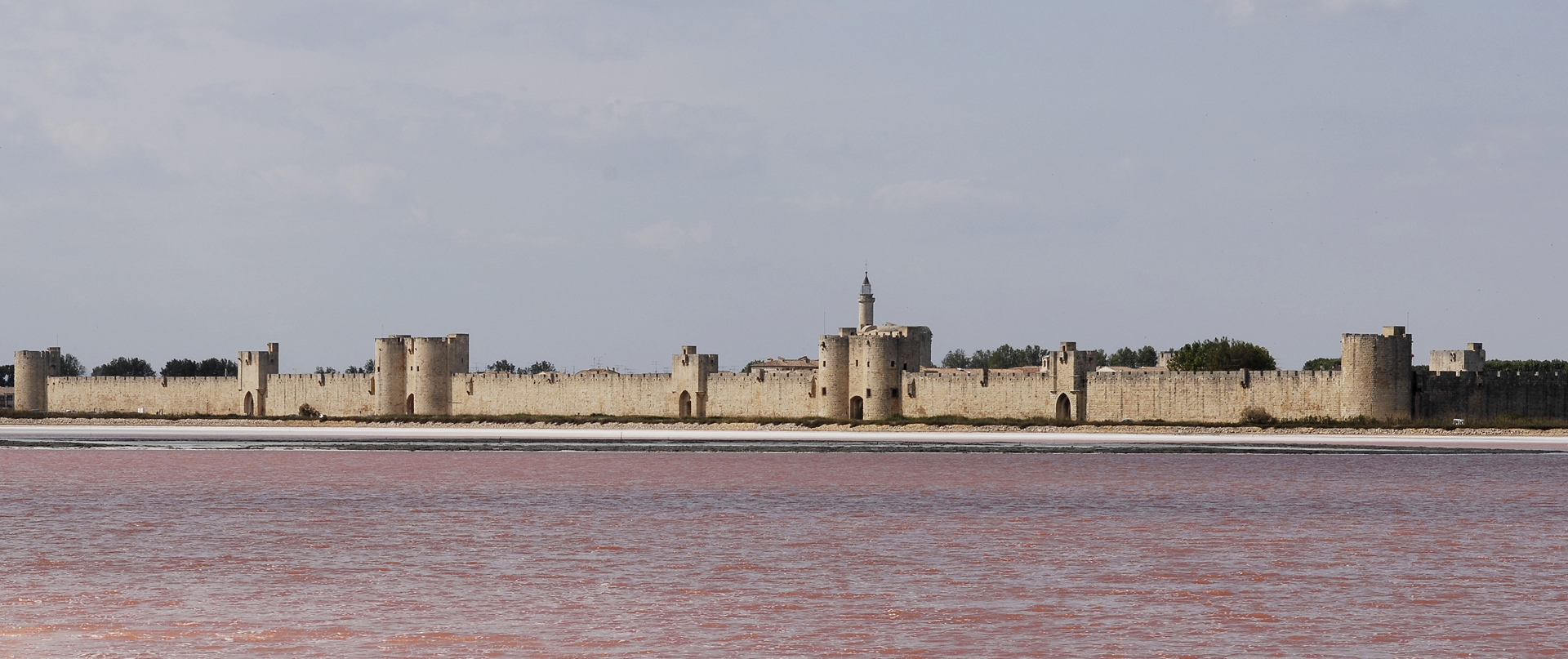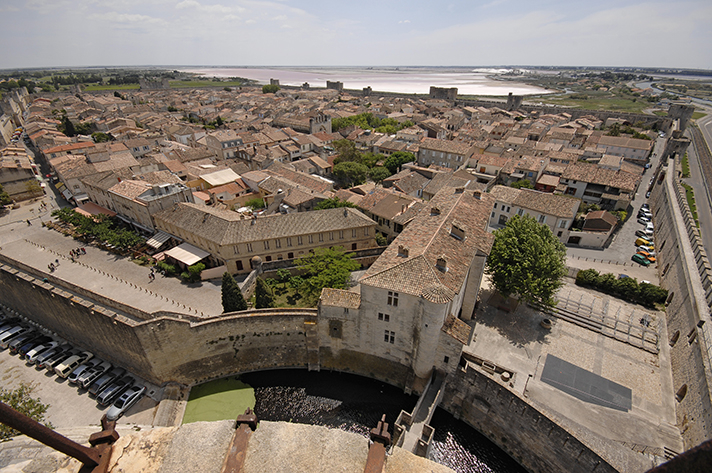History
article | Reading time10 min
History
article | Reading time10 min
At the gateway to the Camargue, between Nîmes and Montpellier, discover a jewel of 13th century Gothic architecture. An impregnable sand fortress designed by Saint Louis, the towers and ramparts of Aigues-Mortes have dominated these wild lands for over 700 years.
Did you know that the map of France wasn't always as we know it today?
It was in 1240 that Louis IX (Saint Louis) launched his colossal project to give his kingdom a port city that would free him, in his future crusades, from the goodwill of foreign princes (principally the Holy Roman Emperor Frederick II, who reigned over Provence at the time, and King James I of Aragon, whose possessions stretched from Montpellier to Catalonia).
Within a few years, the Constance Tower and a castle were erected, in whose shadow a population began to gather, attracted by the impressive privileges granted by the king for the foundation of his city of Aigues-Mortes.
As early as 1266, Louis IX decided to complete this undertaking by launching the construction of ramparts all around the town, which were not to be completed until some 30 years later, under the reign of his grandson Philippe le Bel.
Apart from the castle, which was destroyed during an episode of the Hundred Years' War and rebuilt only in the 17th century, the town has retained its entire 1643-meter perimeter wall, with three corner towers, two flanking towers and five large gates and five posterns . Only the moats and hoardings have disappeared from this monument, whose layout followed the development of armaments. which were maintained until the 18th century.
© Reproduction Benjamin Gavaudo / CMN
Aigues-Mortes was the French kingdom's first port on the Mediterranean.
A port for the last two crusades, both led by Louis IX, Aigues-Mortes was also a trading port from the outset: in 1278, the town even obtained a monopoly on all goods entering and leaving the kingdom. Despite the inevitable silting up of the port by the end of the 13th century, Aigues-Mortes retained this monopoly until Provence became part of the kingdom of France in 1481.
© Philippe Berthé / Centre des monuments nationaux
In July 1538, Francis I chose the town of his saintly predecessor to welcome the Emperor Charles V, with whom he hoped to reconcile and obtain the Duchy of Milan he had coveted for so long.
As agreed with the Emperor, François I returned to Paris and lit the first pyres in Lyon, to which French Protestants were sent.
But these first executions did not prevent the development of Protestantism, which spread rapidly throughout the Midi.
The Aigues-Mortes region was the scene of numerous clashes between Catholics and Huguenots . In 1574, the town of Aigues-Mortes came under Protestant rule. In 1576, Henri III signed theEdict of Beaulieu, granting eight places of safety Aigues-Mortes was one of them. This provision was confirmed by Henri IV, in his illustrious Edict of Nantes, promulgated in 1598.
The town retained its Huguenot garrison of around 2,000 men until 1622, when it was briefly besieged by Louis XIII and Richelieu: a simple show of force and the town's Protestant governor, Gaspard III de Coligny, Duc de Châtillon, surrendered the town to his king in exchange for a French marshal's baton. Aigues-Mortes was to become the champion of the Counter-Reformation.
© Yann Guichaoua / Centre des Monuments Nationaux
Throughout the 16th century, vexations multiplied against the Huguenots, and the fatal blow came when Louis XIV revoked the Edict of Nantes in 1685. Deprived of their rights, French Protestants had to abjure their faith or leave their country. If they did not comply with the king's wishes, they were hunted down and incarcerated in royal prisons.
From 1686 onwards, Aigues-Mortes became one of these places of confinement for Protestants. Not only the Tour de Constance, but also the Tour du Sel, Tour de la Mèche and Tour de Villeneuve, as well as the Porte Saint-Antoine and Porte de la Reine, were refurbished to house these men and women, who flocked from all over the region, sometimes just passing through, before being loaded onto the king's ships as galley slaves, or forcibly married off and deported to the colonies.
Until 1768, Aigues-Mortes saw hundreds of religious prisoners in its gaols.
Among them, a few figures stood out: the Swiss soldier Paul Ragatz, who stirred up trouble with the psalms he sang from the upper room, which were taken up by the women in the lower room, forcing the administration to close the oculus
which occupies the center of the rooms; Abraham Mazel, who in 1705 made a fantastic escape from the Tour de Constance, with 16 Camisard soldiers like himself; and Marie Durand, incarcerated in the Tour de Constance, which now houses only women, and who languished in her prison for 38 years, before being freed by the province's new governor, Charles-Juste, Prince de Beauvau, in 1768.
© Aspheries
By the 19th century, the town's commercial past had become a distant memory, with the port having been downgraded to a simple coastal port, despite major works. .
However, two types of production flourished over the course of the century: the phylloxera crisis that had ravaged French vineyards since 1870 had no effect on the sandy soils surrounding the town, and " sand wine " was booming.
Over time, the salt marshes that occupied only a small part of the ponds in the Middle Ages came to occupy most of the roadstead that lay at the foot of the town. In 1856, the Compagnie des Salins du Midi grouped together the previously scattered salt pans in various hands and developed salt production.
By 1893, the directors had taken to recruiting foreign workers for the arduous task of lifting the salt, which began in mid-August. The Italian workers, who were less well paid and harder at work, were increasingly stigmatized by the local population, who saw them as rivals: a deadly brawl ensued, costing the lives of eight Italian workers, the others having managed to shelter in the Constance tower. The incident caused a stir and temporarily broke off diplomatic relations between France and Italy.
The development of seaside tourism, promoted by the Second Empire, gave the town a major boost at the end of the 19th century, and especially after the Second World War.
© Philippe Berthé / Centre des monuments nationaux








